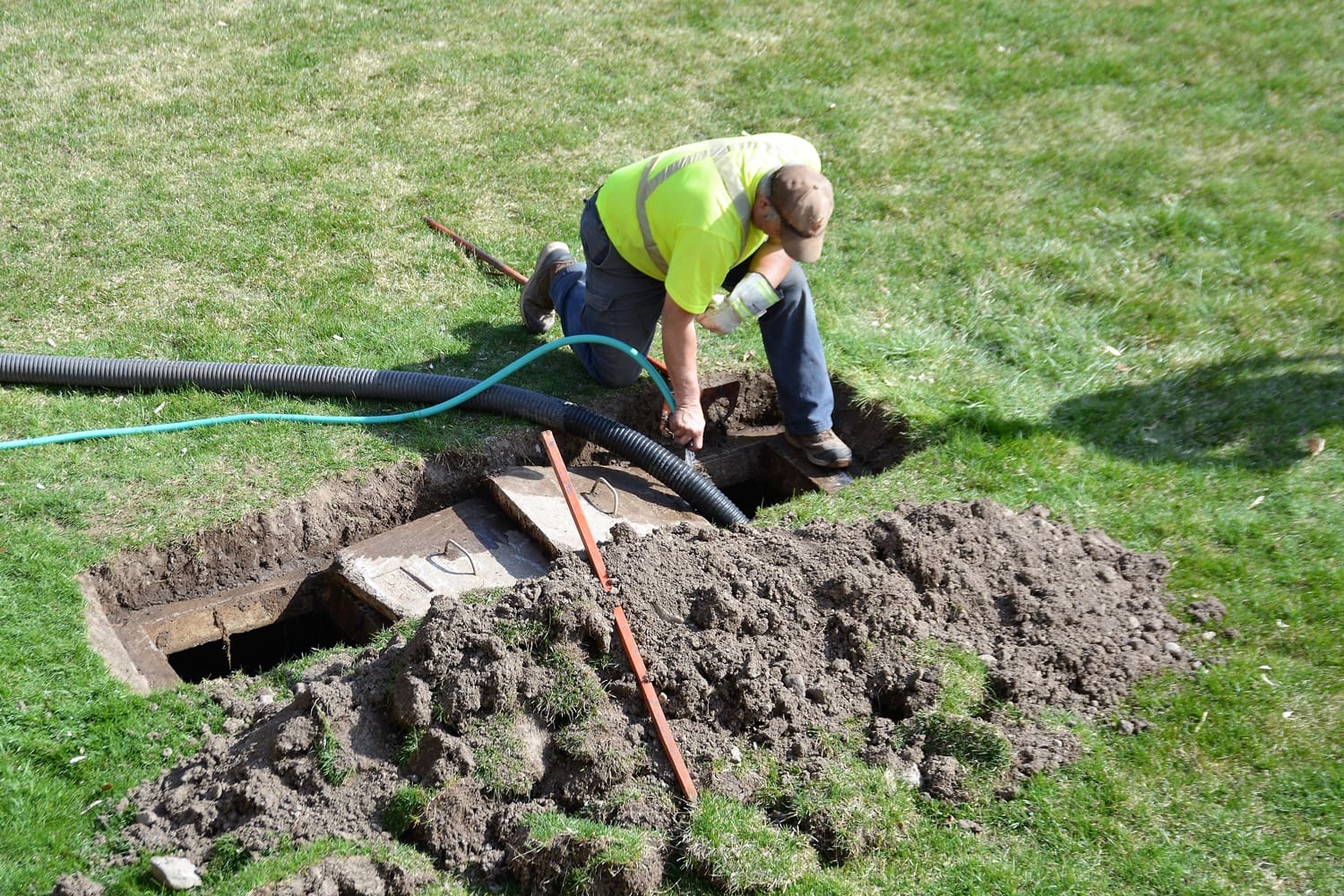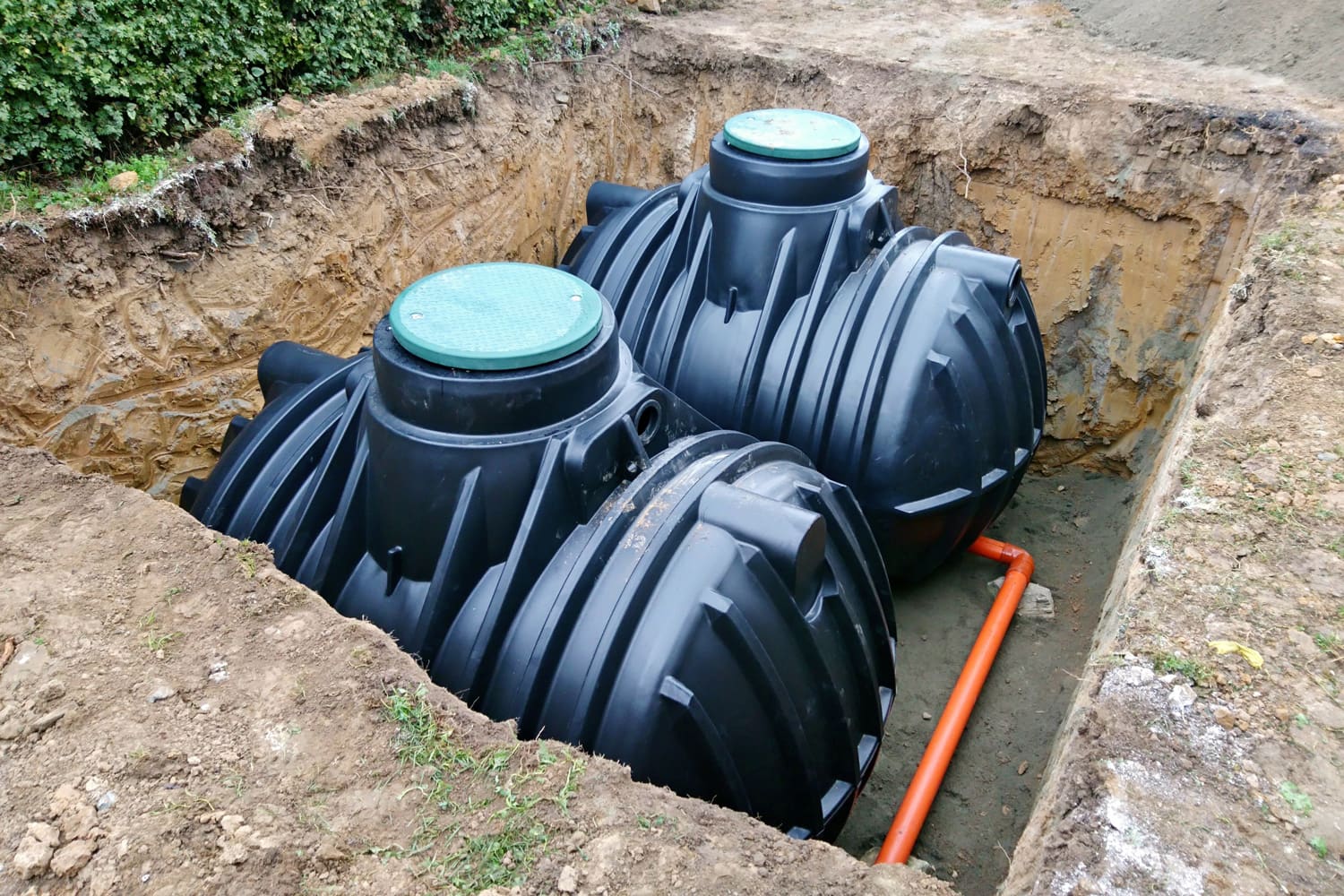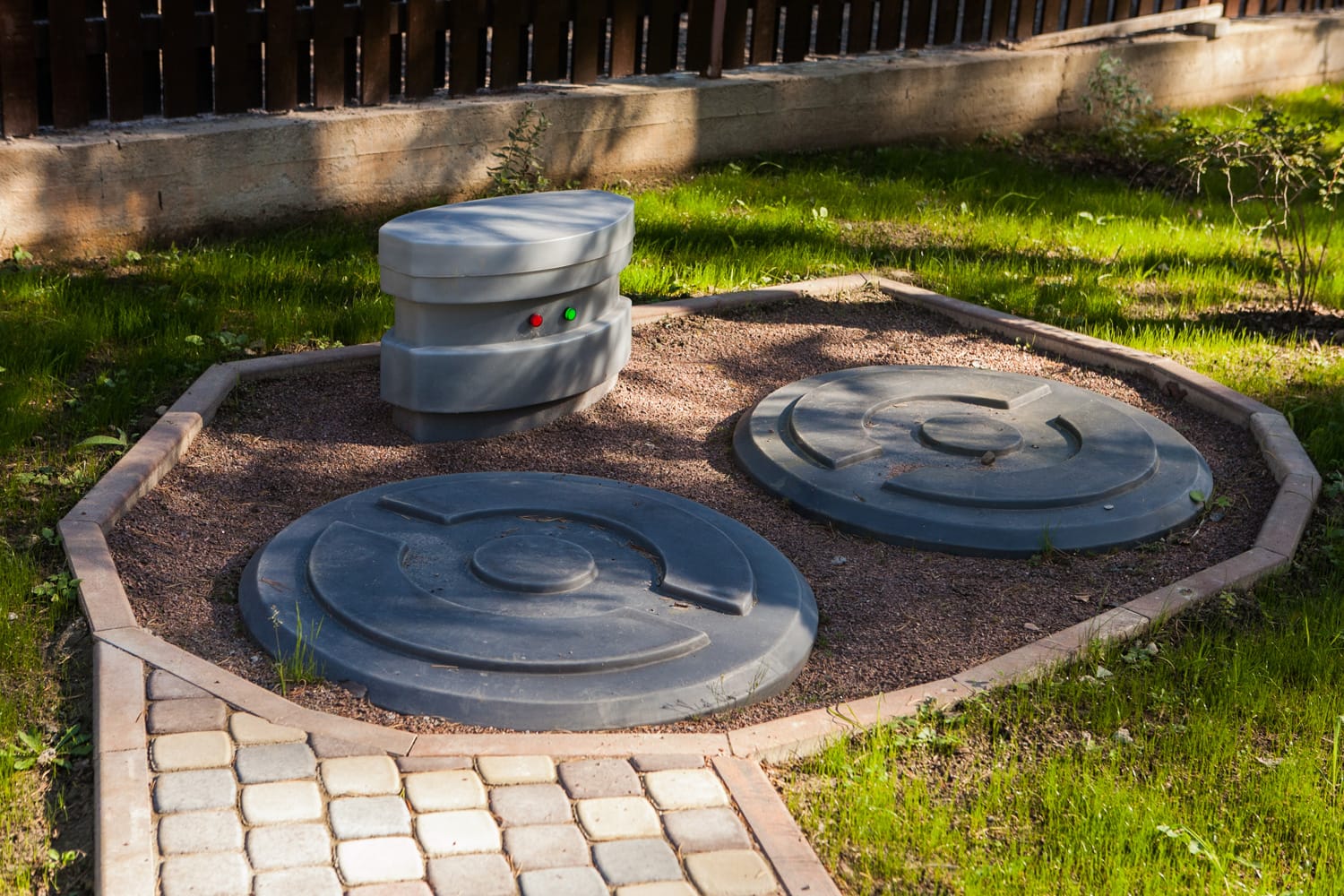There are ways to test your septic tank to determine what repairs it needs and what might prevent it from doing its job. One of these is by doing a dye test. We have done our research on this topic and have compiled our findings so that you can identify any problems with your septic system quickly and easily.
To do a dye test on a septic system, just perform these simple steps:
- Determine the septic tank's capacity.
- Calculate the amount of dye needed.
- Determine the water flow rate.
- Look for the presence of dye.
Knowing the symptoms of a failing septic system is one thing, but finding the cause of any problems is another. Continue reading, as this article goes through the steps of performing a dye test and lays out more details regarding the test.
![Big plastic septic tanks system - How Do You Do A Dye Test On A Septic System [Step By Step For Homeowners]](https://hvacseer.com/wp-content/uploads/2022/09/Big-plastic-septic-tanks-system-How-Do-You-Do-A-Dye-Test-On-A-Septic-System-Step-By-Step-For-Ho.png)
What Is A Dye Test?
A dye test is one way to test the efficacy of your home’s septic system. It allows you to keep tabs on your septic tank's performance and maintenance.
The dye test involves adding a special dye to your septic system, flushing the water into the system, and tracking where it goes to determine what might be wrong with the septic tank and how to fix it.

If the dye shows up anywhere on the ground surface, it indicates a serious septic system failure and means your system did not pass the dye test. This also indicates that it is unsanitary, which calls for immediate action.
How To Do A Dye Test On A Septic System?

The following are the steps on how to do a dye test on a septic system:
Determine The Septic Tank's Capacity
You will need to first determine the septic tank's capacity. You can easily find it out by checking the detailed plan of your STP, since the dimensions are indicated there.
If you don’t have a detailed plan for your STP, you might consider asking your neighbor about their septic tank for reference.
Calculate The Amount Of Dye
Next, you should determine the quantity of dye you’ll need to color the quantity of water. The desired septic dye test volume is 200 gallons, but you should consider how the system is designed.
Determine The Water Flow Rate
Decide on the source you’ll use in adding water to the tank, then calculate the rate of water flow in gallons per min (GPM). Doing this will make it easier for you to calculate the amount of time needed to allow the water to flow into the septic tank.
Look For The Presence Of Dye
Look for the presence of dye around the area. In some circumstances, you might need to wait 20–30 minutes before the dye appears above ground. In certain cases, it could take up to five days before any color traces appear.
When you see the dye on the ground's surface, this means that your septic system failed the test and is faulty.
What Type Of Dye Is Used For A Dye Test?

Fluorescent dye, also referred to as fluorescein dye, is used for testing a septic system. It is a non-toxic, extremely concentrated solution. When poured, this dye usually looks similar to the generic liquid anti-freeze that is neon yellow-green in color.
Aside from the neon color, the use of red or blue is another option, depending on your preference and the surroundings. A green dye can be used in snowy areas, while red dye can be seen better in grassy areas.
When To Do A Dye Test On A Septic System?
A dye test is typically used when you experience signs that your septic tank isn’t working properly. It is highly recommended that an inspector should perform a dye test when:
- The system has no history of maintenance.
- Wet areas are observed.
- The area has a known soil problem issue.
- There's slow drainage.
- Poor water quality.
- There is a smell of sewage near your septic tank and drainage system.
- The condition of the system is in question due to other historic or site conditions.
Problems Determined By Doing A Dye Test
After doing a dye test, you’ll know what the wastewater in your septic tank is doing and what items it is coming into contact with. This will help you identify which parts of the septic system need to be repaired.
Most of the time, leaks or clogs are to blame for dye test failures. Once this is determined, the system would have already shown signs of clogging or leaks and stinky sewage odors.
What If There’s No Evidence Of Dye Present?
The absence of dye on the ground surface after performing a dye test does not conclusively prove the system is working optimally.
Take note that the dye is a tracing agent. Therefore, dye testing can only identify a surface malfunction and not confirm the absence of it. If no trace of dye is present, the test may be unsuccessful or a different system may be causing the malfunction.
You can either consider a retest of the same system using a different entry or test a neighboring system. Be aware that you will need to identify the source of any foreseeable outcomes before testing another system.
What Are The Common Causes of False Negative Result From A Dye Test?
The following list shows some of the common causes for false negative results from a dye test:
- The dye has to work through a lot of soil before surfacing.
- The amount of dye used is inadequate.
- Too little or too much water.
- Dissolved chemicals or bleach were used to restrain or alter the dye.
- Partial or intermittent functions of the system.
- Inactive pumping of the well during dye passage.
- Infiltration of groundwater.
What Are The Limitations Of A Dye Test?

The following are the limitations of using a dye test on a septic system:
A Dye Test Is A Visual Test
Since this kind of septic examination is visual, only what is visible above ground can be reported on by an inspector. As a result, the test has a lot of drawbacks, and it does not necessarily provide an accurate assessment of the state of a septic system.
Thanks to these restrictions and other variables that can affect the results, some inspectors decide not to conduct a dye test on a septic system.
Seller Disclosure
Seller disclosure is one of the main elements that could have a significant impact on the outcome of a septic dye test. The septic tank is assumed to be full and to have not recently been emptied for a septic dye test to provide an accurate result.
Unfortunately, some property sellers intentionally do not disclose that the tank was recently pumped, which compromises the accuracy of the septic dye test.
Visibility Of The Ground Surface

This is another element that may impact the outcome of a septic dye test. Any dye that migrates to the ground surface won't be seen if the region is overrun with grass.
When a repossessed property has not been maintained or has been on the market for a long period, this might be a concern.
If an area is overrun with vegetation, it should be mowed before doing the septic dye test to make the ground surface more visible to provide a reliable test result.
Conclusion
Doing a dye test is one way to determine if your septic system still functions properly. You will need to know the capacity of your septic tank, the amount of dye needed for the test, and the flow rate of water that's required.
By finding out if dyed septic water is present on the surface, you can determine if there is a serious problem with your septic system.
If you found this helpful, do check out these other articles:
